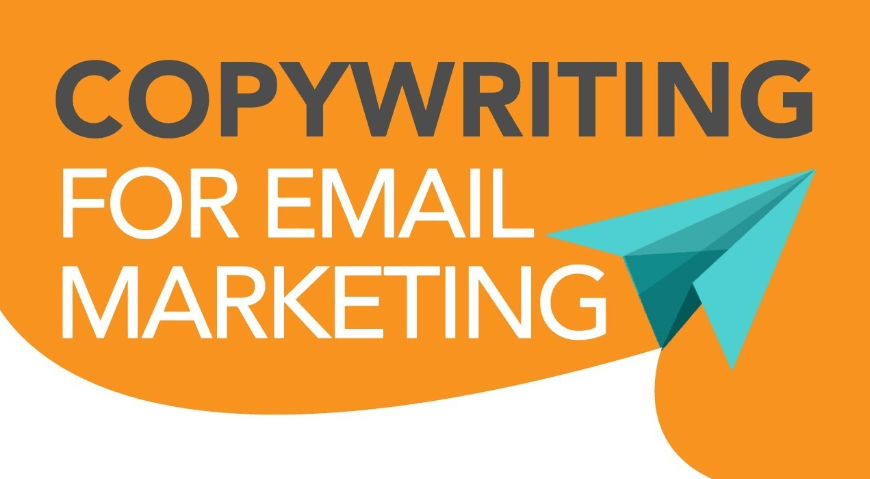Everything You Ever Wanted to Know About Email Copywriting

Are you wondering how to make your emails more effective? Are you looking for tips and tricks on how to write a great email copy? Look no further! In this article, we’ll cover everything you need to know about email copywriting and how to craft engaging messages that get results.
What is Email Copywriting?
Email copywriting is the art and science of crafting persuasive, compelling, and interesting email content. As per SEO Copywriter Sydney, email copywriting can make a big difference in whether your emails are opened and read, or quickly deleted.
There are a few key things to keep in mind when writing email copy:
- Keep it short and to the point – recipients are more likely to read and act on shorter emails
- Write a strong subject line – this is what will determine whether your email is opened or not
- Use persuasive language – your goal is to get the recipient to take action, so use language that will motivate them
- Be personal – use the recipient’s name, talk about their interests, and make it clear that you’re speaking to them directly
- Use images wisely – too many images can make an email seem spammy, but well-placed images can help break up text and add visual interest
- Proofread! – Typos and grammatical errors can make your email look unprofessional
Why is Email Copywriting Important?
Email copywriting is important because it can help you sell more products or services, increase customer engagement, and improve your overall marketing strategy. By crafting compelling emails that are relevant to your audience and offer value, you can encourage customers to take action, whether that’s making a purchase, signing up for your newsletter, or taking advantage of a special offer.
In addition, email copywriting can be used to build relationships with customers and keep them coming back for more. By providing helpful information, answering their questions, and addressing their concerns, you can create a bond with customers that will make them loyal to your brand. Email copywriting can also be used to promote new products or services, announce sales or discounts, or simply stay in touch with customers and let them know what’s going on with your business.
No matter what your goals are, email copywriting is an essential tool for any business that wants to succeed in the digital age. By taking the time to craft well-written emails, you can reach new heights with your marketing efforts and keep your business growing for years to come.
Strategies for Writing Effective Email Copy
There’s no question that email is a powerful marketing tool. But in order for your email campaigns to be successful, you need to know how to write effective email copy. Here are some strategies to help you get started:
- Keep it short and sweet. Your readers are likely scanning your email, so make sure your message is clear and concise.
- Use strong subject lines. A great subject line will entice your readers to open your email.
- Personalize your messages. Include the recipient’s name in the subject line and body of the email to make it feel more personal.
- Write in a friendly, conversational tone. Avoid using jargon or technical language that your readers may not understand.
- Make use of formatting options. Breaking up your text with bullet points or numbered lists can help make your email more scannable and easy to digest.
- Use images sparingly. Too many images can make your email seem cluttered and difficult to read. Stick with one or two images per email at most.
- Proofread before you hit send! Always double-check your spelling and grammar before sending out any emails, to avoid any embarrassing mistakes
Tips for Crafting Compelling Subject Lines
- Keep it short and sweet: The best subject lines are brief and to the point. Long, rambling subject lines are likely to be truncated by email providers, so get your message across in as few words as possible.
- Use keywords wisely: Keywords can be a great way to get your email noticed, but use them sparingly. Stuffing your subject line with keywords will not only make it difficult to read, but may also trigger spam filters.
- Be clear and concise: Vague subject lines are more likely to be ignored than those that are specific and informative. Tell recipients what they can expect from your email, and they’ll be more likely to open it.
- Use numbers and symbols: Adding numbers or symbols (like an exclamation mark) to your subject line can make it more eye-catching in a crowded inbox. Just don’t go overboard – too many punctuation marks will look spammy.
- Ask a question: A subject line that poses a question can be especially effective at piquing curiosity and getting recipients to open your email. Be sure the answer is contained within the body of the email, however, or you’ll risk frustrating readers.
How to Structure Your Emails
One of the most important aspects of email copywriting is structure. How you structure your emails can make a big difference in how well they are received and whether or not they are effective. Here are some tips for structuring your emails:
Subject Line: The subject line of your email should be clear and to the point. It should grab the reader’s attention and make them want to read more.
Opening: The opening of your email should be strong and capture the reader’s attention. It should give an overview of what the email is about and why they should care.
Body: The body of your email should be well-organized and easy to read. It should provide more detail about the topic at hand and include a call to action.
Closing: The closing of your email should leave the reader wanting more. It should thank them for their time and tell them how to get in touch with you if they have any questions or need more information.
Best Practices for Testing Your Content
If you’re like most email marketers, you’re always looking for ways to improve your open rates and click-through rates. One of the best ways to do that is to make sure your email copy is on point. Here are some tips for testing your content to see what works best with your audience:
- A/B testing is a great way to compare two different versions of an email to see which one performs better. Try changing up the subject line, call to action, or even the layout of your email to see what gets more people opening and clicking through.
- Pay attention to your click-through rate (CTR). This metric will tell you how many people are actually clicking on the links in your email. If your CTR is low, it could be an indication that your content isn’t relevant or interesting to your audience.
- Keep an eye on your unsubscribe rate as well. If you see a sudden spike in the number of people unsubscribing from your emails, it could be a sign that something in your content is turning them off. Maybe they don’t like the frequency of your emails, or maybe they find the content uninteresting. Either way, it’s important to pay attention to this metric so you can make changes accordingly.
- Finally, ask yourself whether or not people are actually taking action after reading your emails. Are they clicking through to learn more about your product or service?
How to Measure Your Email Performance
It’s important to know how your email copywriting is performing, and there are a few key metrics you can use to measure this. First, take a look at your open rate – this will show you how many people are actually opening and reading your emails. You can also track click-through rates, which will show you how many people are clicking on links within your emails. Finally, measure your unsubscribe rate – this will give you an idea of how many people are no longer interested in receiving your emails. By tracking these key metrics, you’ll be able to see how well your email copywriting is performing and make necessary adjustments to improve your results.
Conclusion
With the right information, email copywriting can be a powerful tool for any business. Whether you are just starting out or an experienced veteran looking to refine your skills, taking time to learn about email copywriting and its various elements will help you craft engaging messages that drive conversions. We hope this article has shed some light on how to write effective emails with persuasive and compelling content that resonates with your audience. Thanks for reading!








